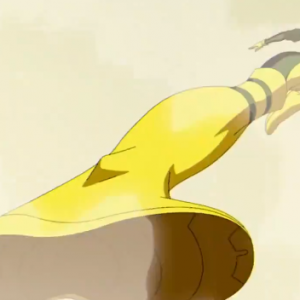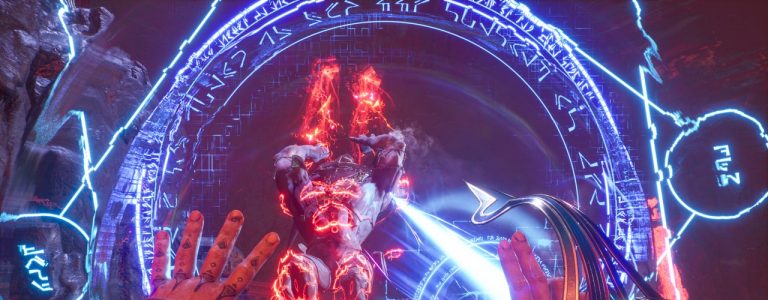Video games can be great vehicles for mysteries. The idea of gathering clues, questioning witnesses, and giving dramatic speeches where you stun an array of suspects with your intellect makes for an exciting fantasy. But lots of games stumble trying to fit the inherently open-ended, red-string-connecting fantasy of the detective into traditionally linear story structures. The Inquisitor is a game like that — it starts with the compelling concept of playing as a medieval church cop hunting a vampire, but it always puts the strings on the board for you, and thus never really lives up to the potential of its premise.
It is quite a premise, though. As inquisitor Mordimer Madderdin, you’ve been dispatched to investigate the citizens of a European town called Koenigstein. What’s more, the story is based on the dark fantasy novels of Polish writer Jacek Piekara, imagining an alternate religious history of Christianity in which Jesus Christ wasn’t a martyr, but instead broke free of his crucifixion and led a vengeful army to conquer the Roman Empire.
It feels a bit like you’ve stepped into Star Trek’s Mirror Universe as you begin The Inquisitor, with characters describing how mercilessness, retribution, and the ends justifying the means are virtues of their religion. For a story-driven game that promises tough decisions to make in conversations and interrogations, it’s an excellent setup. Lots of games will put “moral” questions to you, but I’ve never seen another use its worldbuilding to change the rules underlying that morality. What you consider moral in our reality may not be what characters consider moral in this one, and you might need to worry about how others will interpret your actions in ways you don’t expect.
At least, that’s the underlying idea of The Inquisitor, but it doesn’t ever really land that feeling. The consequences of your actions shake out pretty much the way you’d expect them to whether you’re nice to people or mean to them — or at least, that’s how it seemed to me over two complete playthroughs, the first of which took me around eight hours. How and when your choices affect the story isn’t particularly clear in most cases in The Inquisitor, and its mostly linear, straightforward structure makes it really difficult to tell if and when you’re able to move things in different directions.
That said, the story The Inquisitor tells is a fairly compelling one, at least for most of its runtime. The writing is largely solid, with interesting characters that are mostly portrayed pretty well by the large voice cast, although a few look at you with animatronic-like eyes that seem like they’re trying to escape their heads. But Koenigstein’s art direction successfully gives it a dirty, lived-in atmosphere. It’s generally bigger than it needs to be in a way that makes it feel like a town, not a gameplay space that only exists to hold your objectives. The drawback is that the town is so big that most of your time is spent sprinting from one end to the other as you chase the next plot point.
As an investigator, you’ll eavesdrop on conversations, examine murder victims, and scope out crime scenes from time to time, and these moments generally tell you exactly how many clues to gather before you can move on. Most of your clue-collecting ability comes from The Inquisitor’s version of Detective Vision; when Mordimer prays, the landscape goes gray and important elements like your destination, collectible notes, clues, or scent trails you can follow are all highlighted. Vision modes like The Inquisitor’s always seem like a necessary evil, since it can be tough to spot small details in a busy world, but that didn’t stop praying from feeling like a crutch whenever I used it. It’s difficult to tell what’s interactive and what isn’t or to see details like a blood trail leading to a suspect without highlighting them, but having exactly what you’re looking for lit up orange all the time removes any requirement for critical thinking.
You have more agency through your conversation choices, particularly in interviews and interrogations. People are often lying to you, so whether you’re nice or brusque can determine how forthcoming they’ll be. At the same time, it’s tough to see where the failure points are or if you’ve messed up. In one interrogation, in which Mordimer has a guy strapped to a torture chair, you can take the suspect at his word or increase the pain. I played this scene twice, varying my approach the second time knowing I’d gotten false information before. This time, I got some additional answers I could also vet with my knowledge of later scenes — but Mordimer gave up the interrogation basically right afterward, indicating I’d learned all I could, and he still treated information I knew was false as if it was a good lead. So the extra info didn’t actually lead to anything new, and I was still left chasing a lie.
The reason Mordimer always follows the wrong tack is that it pushes you into one of The Inquisitor’s more action-focused levels in a place called the Unworld. Mordimer can project himself into a sort of astral plane populated by monsters, where it’s possible to piece together visions of past events and learn what actually happened, free of the lies and confusions of the people you’re interrogating. These sequences give Mordimer a supernatural cheat code, providing information he shouldn’t otherwise have, but they also make a lot of those clue hunts and interrogations feel unnecessary. Why bother asking people for answers and wonder if they’re lying if you’re just going to use magic anyway?
The Unworld puts you in a twisted, dark reflection of Koenigstein where you’re constantly avoiding the detection of a flying eyeball called the Murk while you search for five pieces of a vision to trigger a cutscene. To avoid the Murk’s searching gaze, you’ll need to dip under overhangs and pick the right paths through the Unworld. More interesting aspects are added over time, such as sword-wielding enemies and black mist that slows you down while alerting the Murk to your presence, and you’ll even unlock useful abilities like a blast of light to temporarily blind it. But while the first one or two of these levels are tense and spooky, it quickly becomes apparent that enemies are predictable enough that you can pretty much just sprint straight to each objective. Once I figured out there was nothing stopping me from running full-speed around the Unworld, these segments ceased to be stressful.
Lack of challenge thanks to general clunkiness is a problem throughout The Inquisitor, weakening its otherwise decent ideas. There are several times when you’ll engage in sword fights, a system that includes standard things like light and heavy attacks, a quick dodge, the ability to block, and a parry that opens enemies up to counter-attacks. Theoretically, duels should be tense dances where you identify your opponent’s moves and react with the appropriate counter. But I won just about every fight by executing one or two perfect parries and then overwhelming my opponent with a flurry of strikes. The Inquisitor has a couple of more difficult boss fights against more interesting enemies, but most of the battles are easily won because enemies just can’t keep up with you.
Action sequences aren’t the main thrust of The Inquisitor, though. Easy fights and simplistic quick-time events could be forgiven, as could blobby faces and minor gaffes like characters clipping into one another, if the investigation and story were strong enough. But those don’t give you enough agency to feel satisfying; Mordimer always tells you exactly where to go and what to do next. When I hit my first (bad) ending after eight hours, a character chided me for allowing events to transpire that led to a bad outcome. But after a second playthrough, I’m still not sure where I messed up, except for a particular conversation where I was supposed to stall for time but didn’t stall enough; I had no way of knowing which choices would have stalled more than others, either. (Autosaves stop you from save-scumming in The Inquisitor, and after two attempts at this sequence, I wasn’t willing to play through the whole game a third time for another shot at it.)
Even when I made specific choices with the benefit of hindsight — like choosing to avoid a fight I knew would get one character killed, resulting in another character later trying to kill Mordimer as revenge — that later scene still played out as if that person had been killed. There are a few distinct choices that lead to different situations like this one, but they didn’t seem to materially affect the story, and I never saw opportunities to search for different clues or follow alternate leads.
There are occasional technical issues that undercut the experience as well. The Inquisitor’s best sequence takes you into a maze-like dungeon, where you confront a murderous jester who’s constantly rhyming and playing a flute. This guy is creepy, and when you find him dismembering a victim, he disappears among the jail cells, forcing you to follow his taunts emanating from the shadows. You can light torches as you search, but the jester will attack you if you wait in the shadows too long. The presentation of the scene is excellent, making it legitimately frightful. The dinginess of the dungeon under torchlight, the cackling couplets from the darkness, and the escalation of the moment as another character shows up for the jester to target instead, all made for something that was really fun, tense, and spooky — until I got lost in the maze.
For some reason, the prayer ability didn’t work throughout this sequence, so in a later portion when there are no sounds to follow, I was stuck just running around the dungeon, trying to figure out what The Inquisitor wanted me to do. Prompts even appeared to tell me to use the prayer ability to see where I should be going, but it just didn’t work. Eventually, I stumbled on the solution when I happened to pass an item that gave me a contextual button prompt, but by then, all the tension and fright had been drained out.







the1.21updateofficialnameis..._minecraftmonthly-youtube-googlechrome4_26_20242_39_36pm-300x300.png)
















